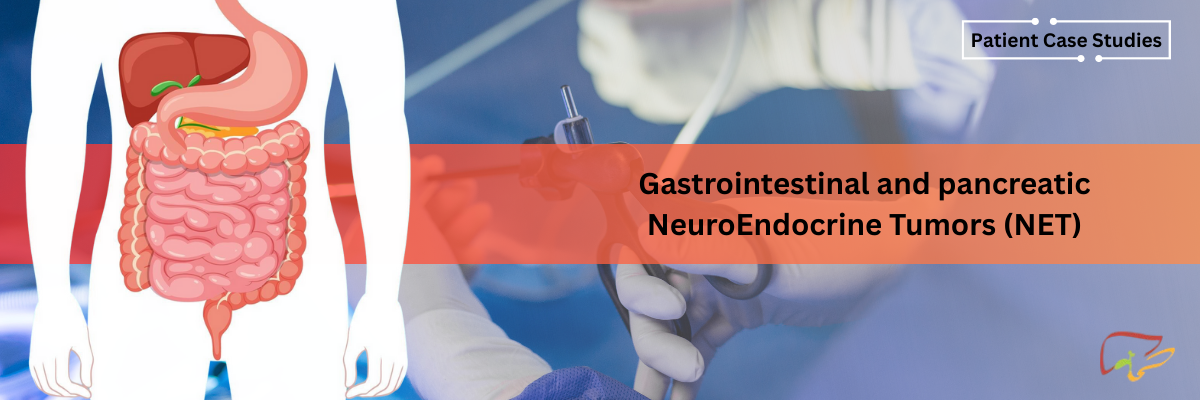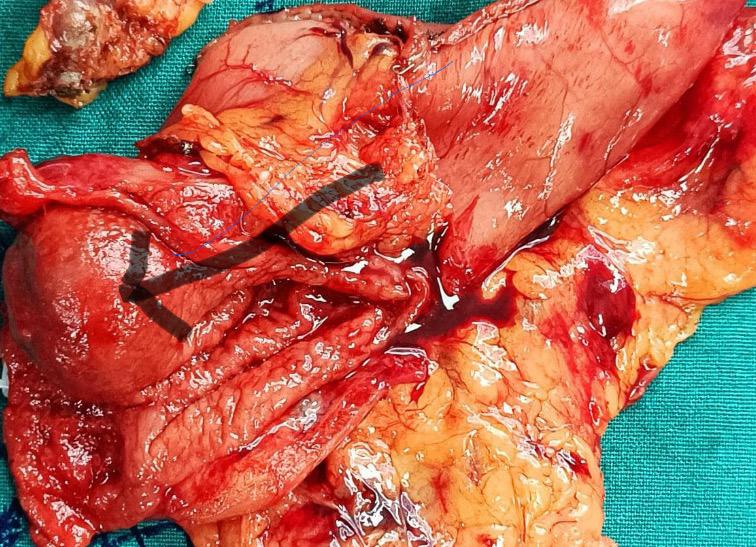Appointment Timing - 9am to 6pm

Gastrointestinal and pancreatic NeuroEndocrine Tumors (NET)
75 year old gentleman, admitted for acute gastroenteritis with acute kidney injury was diagnosed with a tumour in the 1st part of duodenum (beginning of small intestines) as an incidental finding on CT scan. After patient had recovered from the acute illness, he was investigated thoroughly (upper GI endoscopy to confirm location of tumour, endoscopic ultrasound guided biopsy of the tumour which confirmed it as NET, followed by a PET scan (DOTAPET) to see the spread. Investigations confirmed a 3 cm sized early grade (G 1) duodenal NET with spread to local nearby lymph glands. Patient had high risk factors like advanced age, recent kidney injury, ischemic heart disease for which a coronary artery stent was inserted a year back and was on blood thinners. The diagnosis, risk factors and treatment options were discussed and explained to the family. The treatment options were a high risk surgery, medications including chemotherapy or not to do any active treatment. Surgery was the only curative option especially considering the spread to lymph nodes. Patient and family were keen on the curative surgery option. After complete cardiac assessment for fitness for surgery, the blood thinners were stopped for 5 days following which he underwent a laparoscopic surgery. The tumour bearing portion of duodenum with adjoining small part of stomach were removed (picture). The lymph nodes were removed separately. The stomach was joined to the small intestine the completing the entire surgery via laparoscopic route. Patient also had stone in the gall bladder which was also removed at the beginning of the surgery. All the specimens were put in one specimen bag and removed through a small incision.
Gastrointestinal & Pancreatic NETs also known as Gastro Entero Pancreatic NETs ( GEPNET) were relatively uncommon tumors. However these are getting increasingly detected now with the advancement in age and advances in imaging technology. Small intestine, stomach and pancreas are commonly affected organs; while involvement of large intestine and esophagus are rare. They can be benign or malignant, symptomatic or asymptomatic, secreting hormones or non-secretory, small medium or large, solitary or multiple, localised or disseminated and treatment is decided upon considering a host of patient and tumour factors. When indicated surgery is the only curative option; other options being drug therapy, chemotherapy, targeted therapy, embolisation etcetera. Sometimes surgery is performed after a combination of initial nonsurgical treatments to make the tumour operable and resectable. These tumors often spread to liver. In such cases an aggressive liver directed treatment including aggressive liver resection is helpful.
Whenever possible the surgery is performed via laparoscopic route as in our case. However extensive multiorgan resections need open surgery.
For Consultation Available At:
Timing: Monday To Friday - 9am To 5pm & Saturday 9am To 2pm
(Consultation Only by Appointment)
Address: Lilavati Hospital, A-791, Bandra Reclamation Rd, Bandra West, Mumbai, Maharashtra 400050
For Appointment call: 09821046391
Timing: Saturday 9am To 10am
(Consultation Only by Appointment)
Address: 93, ACI Hospital, 95, August Kranti Rd, Kemps Corner, Cumballa Hill, Mumbai, Maharashtra 400036
For Appointment call: 09821046391
Consultation Only by Appointment
Address: Raheja Rugnalaya Marg, Mahim West, Mahim, Mumbai, Maharashtra 400016

